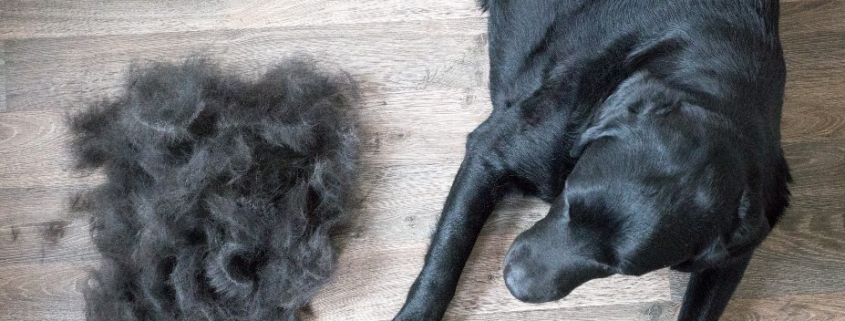Excessive Dog Shedding
Is excessive dog shedding a problem in your home? You are not alone! Managing dog hair is one of the most complex parts of being a dog parent. Thankfully, there are ways that you can target dog hair shedding at the source. This article will detail why dogs shed and how to reduce shedding.
Shedding is a natural process for our four-legged friends. It allows them to lose old or damaged dog hair. All dogs shed, but the amount and frequency of the shedding depend on the dog’s health and breed. Time of the year may also factor in the amount of shedding. For example, dogs can develop thicker coats in the winter and shed that coat in the spring.
Excessive shedding can result from stress, a medical concern, or poor nutrition. Medical problems leading to excessive dog shedding include parasites, bacterial infections, pregnancy, cancer, food allergies, or immune diseases. Please visit your veterinarian if you suspect your dog is experiencing excessive shedding due to a medical concern. If your dog isn’t receiving the nutrients it needs to maintain a healthy coat; it may experience excessive shedding.
Dog hair must be groomed. If you are ready to get rid of dog hair in your home, you can try various techniques. Brushing your dog outdoors daily will save time and effort dusting, sweeping, and vacuuming each week. Regular bathing with a shed-control shampoo and conditioner will help control shedding before it happens. De-shedding your pet home with a de-shedding tool will remove the undercoat and loose hair without damaging your dog’s skin.
Shedding is a natural part of a dog’s life. However, there are concerns about excessive shedding. Determining the reason for shedding will help you develop a game plan on how to address the shedding.



